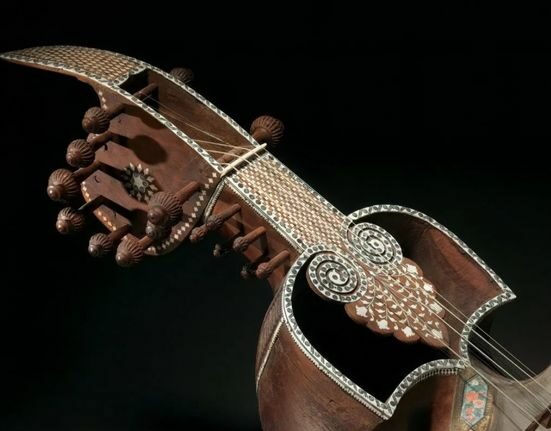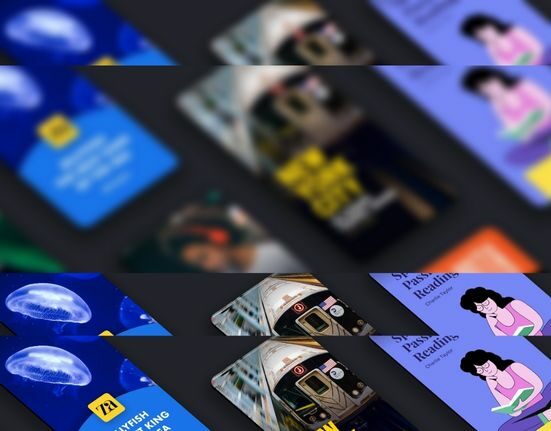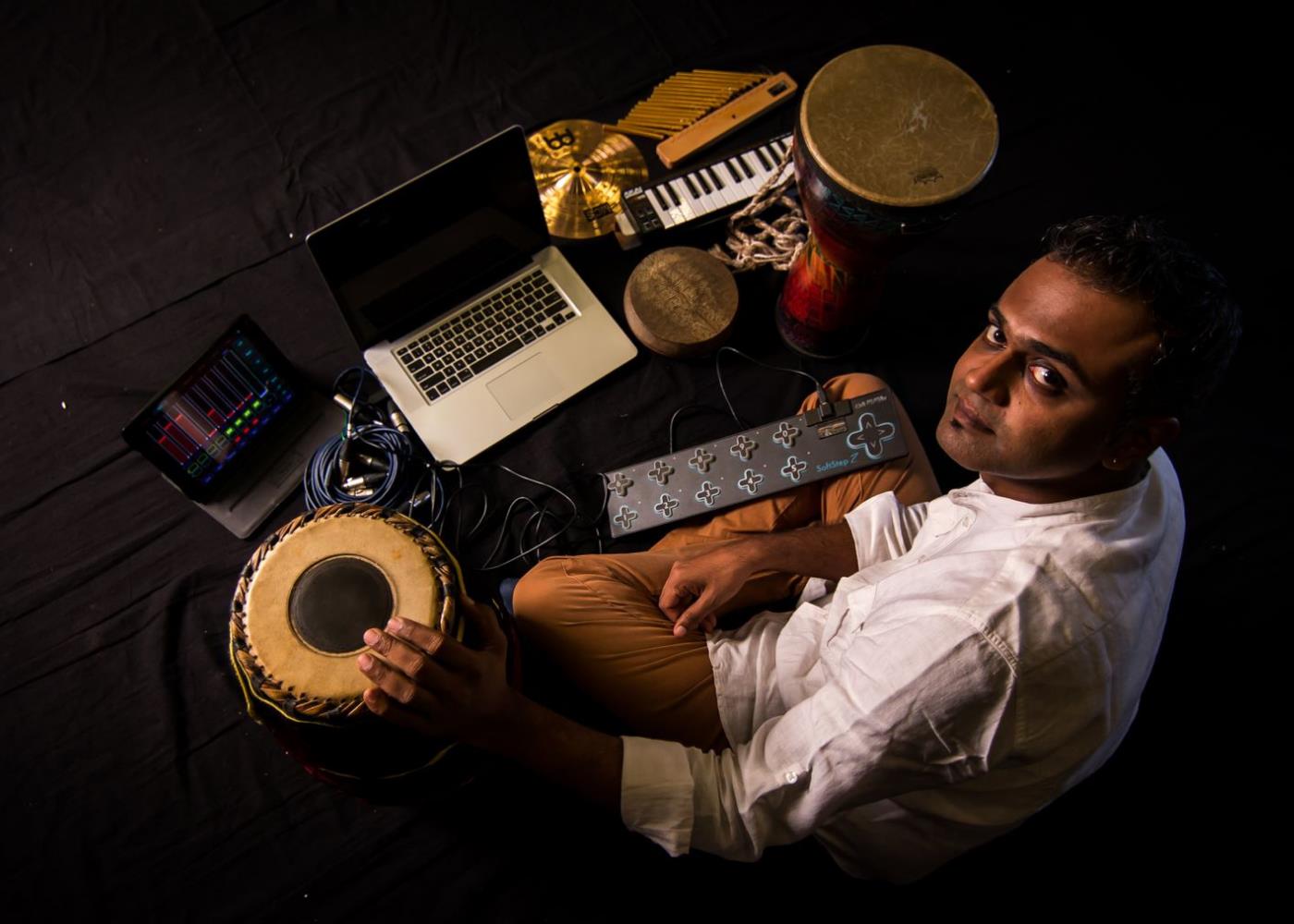“Creativity begins where the mind pauses” is the motto which has repeatedly pushed Viveick Rajagopalan to explore a wider sonic spectrum. The Mumbai-based percussionist, composer and creator of multiple music initiatives, has worked with artists from across the globe like Lucky Ali, Bugge Wesseltoft, Richard Bona to name a few. In this freewheeling chat for BeatCurry, the Mridangam maestro, spoke about his journey so far, adapting to the changing times, shuffling between genres while retaining the sound of his Mridangam, sonic branding and his new project ArtSqft.
Hardik Joshi | BeatCurry Team
Lucky Ali, Sifar and more
Viveick met Lucky Ali in 1997 when they were auditioning for a band to perform at road shows and an award ceremony for a music TV channel. The following year he travelled with him to London to record for ‘Sifar’. He went on to play the Mridangam on songs like ‘Jheel Pe Jaise’ and later played the Ghatam, Kanjira and Mridangam on the Bollywood hit ‘Kyun Chalti Hai Pawan’ from the movie ‘Kaho Na Pyaar Hai’ with him.
“The fact that Lucky Ali is free spirited helps in his sound too. Conventionally, a Tabla player is preferred in a band but he specifically wanted a Mridangam player which came as a surprise to me too. I also played the Ghatam and Kanjira in the band although they already had a percussionist. Coming from such a lineage, Lucky was exposed to different sounds, always ready to experiment and explore. His brother in law and producer Mikey McCleary was a great collaborator and always balanced the sound exploration with him,”
recalled Viveick.

Adapting Carnatic Music with Global sounds.
Lucky is known to use a lot of Carnatic, Folk and World Music in his sound but the Hindustani classical influence is not fairly visible. Countering my point, Viveick asked,
“So what’s the problem in that?”
Continuing after a hearty laugh, he said,
“I don’t think he ever thought in that direction. He is always inspired by new and different sounds. Coming from South Indian Roots was a plus point.”
Trained under the Carnatic tradition on the Mridangam, Viveick uses his classical roots to compose music that shifts between genres seamlessly while retaining the Indian essence. His unique sound is a reflection of his influences from Electronic, Drum-n-Bass to Jazz and Folk. When playing Carnatic music, there is a certain expectation as to how it is played. But with pop music these expectations cease to exist. It was a learning experience for Viveick which helped him create a space for his instrument and make it sound just right.
“No instrument defines how it is played, it’s the music that does. Playing for a band is akin to performing in an arrangement as there are various other instruments and you have to find your space in that spectrum. While in a Carnatic music performance, the Mridangam player has to accompany the lead performer. At times, the player is the only percussionist or a part of maximum 2-3 percussionists. There is no ensemble as such but there are a lot of improvisations in every performance. In a band set up, the improvisations are few and far in between,”
dwelled Viveick.
Adding,
“It’s all about adapting to the event. It is not difficult to do it, but I am fortunate to have had these experiences, otherwise I might have never explored my instruments beyond the basics. More than knowing one’s role in the setup, it is important to know the role of the instrument in the particular song. If an artist puts himself before the instrument, he/she might go haywire during the performance. Remember, the artist doesn’t need to shine during the performance but instead ensure the instrument finds its voice.”
Sonic Branding and the Science behind it
Audio and Streaming have gained rapid strides in recent years, forcing each platform or brand to create a unique musical recall value. This has ensured the increasing popularity of sonic branding and it is going to be more significant than ever.
“There’s a misconception about sonic branding that it’s only about that small sound it makes. Just like every music it is a mixture of art and science. The sonic branding space is largely intuition-based though one may do their research. I have done more than 400 jingles so far. The brief received for them is very different from a visual advertisement.”
elaborated Viveick.
Music is a subset of sound and there is a certain science to it. When a higher scale is played, people react joyfully while a minor scale may make one melancholic. The correlation between music and mood is unmissable. Viveick, along with Aishwarya Natarajan set up SUNOH, Brand Sound Consultants with an aim to marry science and arts to capture the mood of the consumer through sonic branding.
“The emotional quotient plays a vital role. The choice of music genres is subjective to each individual so the need is to make it sound objective. My partner Aishwarya and I developed a patented tool called ‘Tyuns’ which picks up colour frequencies and gives a set of notes which one can use to compose. It has to connect emotionally, otherwise it’s useless. The tempo plays a big role on the expected outcome one wants.”
explained Viveick.
Going Virtual
Ever since the COVID-19 outbreak, many organizations and artists have gone to the virtual world to stay connected with the fans and consumers. What was predicted as a temporary shift to virtual events now seems to be here for a long run. The artist can reach a much wider audience than an on-ground event and fans can view their stars from any corner of the globe. While a few artists and event organisers took to the virtual platform with ease, most are still figuring out the economics and marketing aspects of it. To make things easier for them Viveick and Atul Shukla setup ArtSqFt, a virtual platform built with the aim to empower artists to take charge of their virtual business and engage constructively with their community.
He concluded saying,
“We created it for artists to literally take control of their business based on a percentage model. All the necessary tools for a virtual show like marketing, ticketing are handed to the artists. All they need to do is upload all the vital details on the platform. There’s complete transparency about the ticket sales too. An artist gets to create their own global community on the platform.
Viveick Rajagopalan is among today’s most modern and offbeat voices in the field of musical creativity, is definitely an artist to watch out for cross-genre music collaborations and pathbreaking music.
If you’d like to know more about the unique and versatile forms and flavours of music,
Log on to www.beatcurry.com, subscribe and get your daily music updates from BeatCurry.







